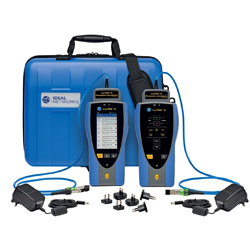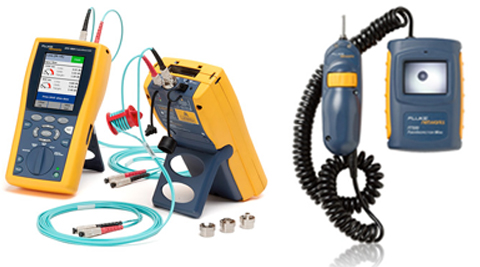How to Choose the right optical fibre diameter analyzer for your industry needs
A Comprehensive Overview to Optical Measurement System for Fiber Evaluation
When it involves fiber evaluation, comprehending optical measurement systems is important for evaluating efficiency and making certain quality. You'll explore essential methods like interferometry and spectroscopy, which aid you gauge vital criteria. There's even more to it than just these approaches; understanding attenuation measurement strategies can significantly impact your network's efficiency. As you browse through this overview, you'll discover insights that might transform your strategy to fiber optics.
Understanding Optical Measurement Equipments
When you check out optical dimension systems, you'll find they're essential for assessing fibers with precision. These systems make use of light to examine different attributes of fibers, including size, refractive index, and uniformity. By using techniques like interferometry and spectroscopy, you can obtain beneficial understandings right into the fiber's properties.You'll discover that these systems are made to lessen mistakes and enhance accuracy, making certain trustworthy information for your analysis. Various arrangements, such as single-mode and multi-mode systems, satisfy particular fiber kinds, allowing you to choose the most effective fit for your needs.Moreover, the integration of innovative software application devices assists you translate the information efficiently, making it easier to determine any type of incongruities or issues. As you explore much deeper into these measurement systems, you'll value just how they simplify the logical process and boost the overall top quality of fiber production and testing.
Key Parameters for Fiber Evaluation
Trick criteria for fiber evaluation play an important role in establishing the top quality and performance of optical fibers. When you review a fiber, you'll wish to concentrate on attributes such as attenuation, data transfer, and modal diffusion. Depletion measures the loss of signal toughness as light trips with the fiber. A reduced attenuation worth suggests better high quality and longer transmission distances - optical fibre diameter analyzer.Bandwidth refers to the data-carrying ability of the fiber and is important for high-speed interaction. You'll require to evaluate the data transfer to ensure it meets your application demands. Modal diffusion, which emerges from the different speeds at which light travels through various settings in multimode fibers, impacts signal clearness
Methods for Attenuation Measurement

Transmission capacity and Its Effect On Efficiency
Comprehending bandwidth is vital for enhancing fiber performance, as it straight affects the quantity of data that can be transferred over a network. Greater bandwidth indicates you can send out more details all at once, enabling for faster communication and much better total efficiency. When you're dealing with optical fibers, it's crucial to take into account exactly how data transfer connects with fiber attributes, such as core size and material properties.If the bandwidth is limited, you might experience information loss or slower rates, affecting your applications. Furthermore, various kinds of fibers can support differing bandwidth levels, so it is essential to select the ideal fiber for your specific needs.You should also bear in mind that environmental aspects, like temperature level and outside disturbance, can influence transmission capacity. By recognizing these aspects, you can make enlightened decisions to improve your fiber optic systems, ensuring dependable and reliable information transmission.
Refractive Index Measurement Approaches

Complete Internal Representation
Overall inner reflection (TIR) acts as a basic principle for measuring the refractive index of fibers. When light journeys from a denser tool to a less thick one, it can only be totally shown if the angle of incidence exceeds a particular threshold, called the vital angle. This phenomenon enables you to determine the refractive index by analyzing the angles at which light reflects or refracts. By utilizing a configuration that directs light into a fiber and gauges the resulting angles, you can determine the refractive index precisely. Understanding TIR not just boosts your fiber analysis but additionally improves the style and performance of optical systems. Leveraging TIR can lead to extra efficient fiber-based applications.
Interferometric Methods
Structure on the concepts of overall interior reflection, interferometric techniques provide a powerful means for measuring the refractive index of fibers with high accuracy. These techniques manipulate the disturbance patterns created when beams split and recombine after traveling different paths. You can use configurations like the Michelson or Mach-Zehnder interferometer to examine phase changes triggered by adjustments in refractive index. By meticulously adjusting your system and assessing the resulting edges, you can figure out the refractive index with impressive precision. It's crucial to maintain steady environmental conditions to lessen errors. With these techniques, you'll improve your understanding of fiber buildings, bring about much better efficiency in various applications, from telecommunications to sensor modern technology.
Modal Dispersion and Its Value
Modal diffusion describes the dispersing of light pulses as they travel via a fiber, which can affect the total performance of the system. You'll see that this phenomenon can result in signal distortion, affecting data transmission prices and top quality. Recognizing its importance is necessary for enhancing fiber optic designs.
Interpretation of Modal Diffusion
In fiber optics interactions, modal dispersion plays a considerable function in establishing signal quality and transmission speed. It occurs when various light modes take a trip at varying rates with the fiber. Since each mode has distinctive paths and qualities, they can arrive at the receiving end at different times. This time around difference can result in signal spreading and distortion, which why not check here can deteriorate the total performance of the communication system. You may encounter modal dispersion mainly in multimode fibers, where the numerous courses of light exacerbate the concern. Recognizing modal dispersion is crucial for maximizing fiber designs and making sure that your communication systems run efficiently, maintaining the integrity of the transmitted signals over longer ranges.
Effects on Fiber Performance
Comprehending modal diffusion helps highlight its results on fiber performance. This phenomenon happens when various modes of light travel at differing rates within the fiber, leading to indicate spreading gradually. As try this web-site you assess fiber optics, you'll notice that enhanced modal dispersion can significantly deteriorate signal top quality, causing lowered transmission capacity and longer transmission distances. In useful terms, this implies your information can show up distorted or postponed, affecting overall communication performance. To reduce these effects, you might consider utilizing single-mode fibers, which decrease modal diffusion. By picking the best fiber kind and comprehending exactly how modal dispersion influences efficiency, you can boost transmission high quality and assurance trustworthy information transfer in your optical measurement systems.
Devices and Technologies for Optical Measurements
When it comes to optical dimensions, a number of ingenious tools and modern technologies are at your disposal to enhance fiber evaluation. You'll locate fiber optic testers, which analyze signal high quality and efficiency, essential for keeping perfect network efficiency. Optical time-domain reflectometers (OTDRs) are essential for finding faults and determining loss over ranges, giving thorough insights right into fiber honesty. Additionally, spectrometers can assess light spectra, helping you identify material residential properties and composition.Don' t ignore the relevance of imaging systems, like digital microscopes, that enable you to visually examine fiber surfaces for defects. Likewise, take into consideration utilizing polarization analyzers to determine tension and pressure in fibers, which is necessary for recognizing their behavior under different conditions. By leveraging these tools and modern technologies, you can significantly enhance your fiber evaluation processes, making sure dependability and high efficiency in your optical networks.
Often Asked Questions
What Are the Expenses Connected With Optical Measurement Systems?
The costs connected with optical dimension systems can vary significantly. You'll need to review tools costs, maintenance costs, software application licenses, and prospective training costs. Budgeting very carefully will assist navigate to these guys you prevent unanticipated financial obstacles down the line.

How Often Should Fiber Evaluation Be Carried Out?
You need to do fiber evaluation on a regular basis, typically every 6 months or after significant modifications in the environment (optical measurement system). This guarantees optimal efficiency and assists identify potential concerns prior to they affect your system's efficiency and reliability
Can Optical Measurement Equipments Be Calibrated in your home?
Yes, you can calibrate optical measurement systems at home, yet it requires accuracy. Make particular you comply with the producer's guidelines, utilize appropriate calibration requirements, and ascertain your outcomes to guarantee accuracy in your measurements.
What Industries Typically Utilize Optical Measurement Equipments?
You'll discover optical measurement systems commonly utilized in industries like telecommunications, production, healthcare, and research. They're important for quality assurance, fiber analysis, and making certain precise measurements in numerous applications, boosting performance and accuracy across industries.
Are There Any Safety Worry About Optical Measurement Solutions?
Yes, there are safety interest in optical measurement systems. You need to always put on safety eyeglasses to secure your eyes from intense lights and guarantee appropriate training to manage equipment securely and prevent crashes.